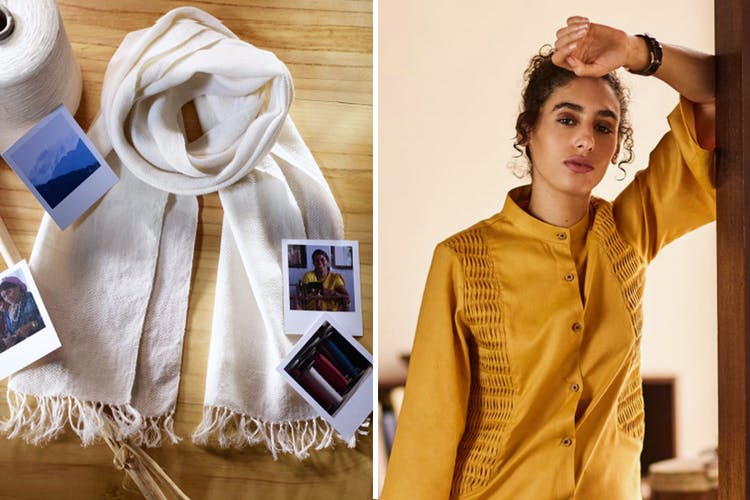

Shubhangi Misra spoke to the pioneers leading the hemp movement in India to understand how it can cash on the cannabis boom
As the world shifts its ethos to sustainability and environmental friendly sources, hemp, the most versatile plant on the planet is raring to go main-stream. The global market for hemp is growing at 4 per cent every year, with China and Netherlands helming global exports. Yet India, even with its extremely hemp-friendly temperate contributes only to.001 per cent to this market.
The reasons being the restrictions on the cultivation of industrial hemp—the non-psychoactive relative of marijuana. With only 0.3 per cent Tetrahydrocannabinol (THC) levels, it is useless for recreational purposes yet the cultivation of the plant continues to face restrictions because it belongs to the Cannabis family.
Amlan Datta a Social Entrepreneur and Filmmaker who tried to work with communities in Uttarakhand and Himachal Pradesh in order to establish a hemp cottage industry says he “fell flat” on his face after finding little to no support from the government and investors. “My idea was to use the wasted stems from Marijuana plants found in Malana, Himachal Pradesh and nearby villages to use as raw material for fabric. The villagers would process fiber out of the plant, helping them become self-sustainable. With this model, you could then make clothes from scratch but my plan could never see the light of the day.”

Filmmaker and Social Entrepreneur Amlan Datta
He says hemp thread is finer and longer than an average cotton thread, making the existing carding machines redundant. “I successfully modified carding machines available in the market to make them suitable for processing Hemp. Then, these machines would have been supplied to different villages in Himachal Pradesh, to equip communities with the right resources to make fabric out of the Cannabis Plant, which grows like wildfire in the region.”
In 1985 Marijuana was listed as a narcotic and consequently banned by the Indian government after mounting pressure from the United Nations. Feral Indian hemp has very high levels of THC thus it is illegal to cultivate, making the very basis of Datta’s idea illegal unless applied specifically to industrial hemp. “There’s a lot of stigma against Hemp since it comes from the same family as Marijuana. This has to be fought against and economic gains have to be shown to the government for it to relax laws against cultivation.”
Bombay Hemp Company (BOHECO), a Mumbai based start-up is doing just that.
Founded in 2013, Boheco works closely with the government in developing Hemp seed varieties which are less psychoactive in nature and boast THC levels lower than 10 per cent. “We’re working closely with the governments of Jammu and Kashmir, Uttarakhand and Uttar Pradesh to research and develop low THC seeds with the help of the students of CSIR-NBRI, Lucknow,” says Sumit Shah, Director and Co-founder of Boheco. He also adds that they’re trying to ‘cottonise’ Hemp fabric, “in the sense that we’re breaking it into shorter fibres for it to be compatible with the existing carding majchines across the country. We’re also trying to soften the coarse texture of the fabric by blending it with different materials, to make it almost indistinguishable from a normal cotton cloth.”

Boheco’s brand B-label markets clothes made out of organic hemp
When it started, Boheco’s first task was to de-stigmatise people’s approach towards Hemp. “Boheco finds itself in a very special place, where it’s helming the Hemp revolution in the country and is able to speak to multiple stakeholders. We use a product-led approach in sensitising them about the benefits of this really unique crop that holds great potential in the future of the fashion industry as big brands are looking to shift towards more sustainable garments.”
At their annual stakeholder’s meeting, Inditex, Zara’s parent company pledged to make a complete shift towards sustainable, recycled clothing by 2025. In association with Outerknown, Levi’s is investing heavily into making jeans out of a Cotton and Hemp blend. They have already successfully created a more sustainable form of denim.
Even with these major developments in the industry across the world, the question of affordability still looms large, especially in India. On a 30-40 per cent sale, B Label’s (the online clothing venture by Boheco) cheapest Hemp shirt starts from ₹2300 onwards. On other websites such as Douspeakgreen a basic white Hemp T-shirt will easily cost you ₹1500. Making Hemp clothes a little out of the budget for a lot of youngsters and college going students.
“The way to make Hemp fashion more affordable is to integrate backwards. Right now we rely heavily on imports to procure fabric. Once large-scale manufacturing begins in the country, sustainable Hemp fashion will become accessible for everyone. And that is what we’re working towards, on a daily basis,” says Chirag Tekchandaney, Director and co-founder of Boheco.
Not just textiles, Hemp is a sustainable choice in more than 25,000 products says Kartik Madhok, co-founder and partner of Indian Hemp Associates. “I have been working in the Hemp industry for 6-7 years now. My career began with Hemp Technologies Global, an American organisation that’s working towards making hempcrete (a mixture of Hemp and lime) popular, which is a sustainable way of construction. Houses made of hempcrete do not parch the land of water, and help reduce the greenhouse effect. It’s walls are called ‘breathable walls’ because they help absorb excess Carbon from the atmosphere and store more oxygen. A lot of houses in Nepal are made of hempcrete.”

Kartik Madhok of Indian Hemp Associated has been working on setting up a hemp cosmetic brand in India
Working to make Hemp seed oil based cosmetic products Madhok explains the barriers he faces while sourcing raw materials, “since it’s not legal to cultivate the crop, to get raw materials we need permissions from the forest department. The department often denies us permission to access the plant since it is illegal. We need some policy level changes to take care of such barriers stunting growth.”
Currently there is only one state in India, Uttarakhand that allows commercial growth of industrial hemp . In 1985, the same year as India, China also banned commercial cultivation of the hemp plant under mounting pressure from the United Nations. But around 2010, when cannabis legalisation lobbying grew stronger, China was the first one to cash in and okayed commercial plantation of cannabis sativa in its Yunnan Province and followed that move by steadily introducing it to other districts.
Ever since it lifted the ban on cultivation, China has made a formidable name in the Industrial Hemp Market. Revenue just from textiles stood at $1.2 Billion. With America rapidly legalising CBD based medicines, China’s CBD based products are set to generate a revenue of $228m by next year itself.

China makes $1.2 billion from hemp textile alone currently and the number is going to increase drastically over the coming years
Much like China, India too cash on this cannabis boom, both environmentally and economically. Its tropical and temperate climate helps cultivate the plant for a longer duration of time. It is essential to battle stereotypes and stigmas and differentiate between the narcotic cannabis and the industrial version so that policy level changes can be implemented.